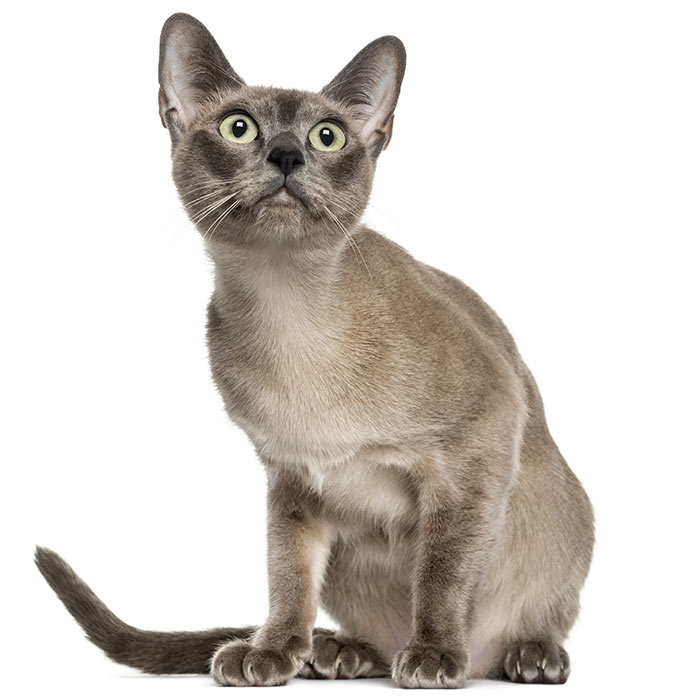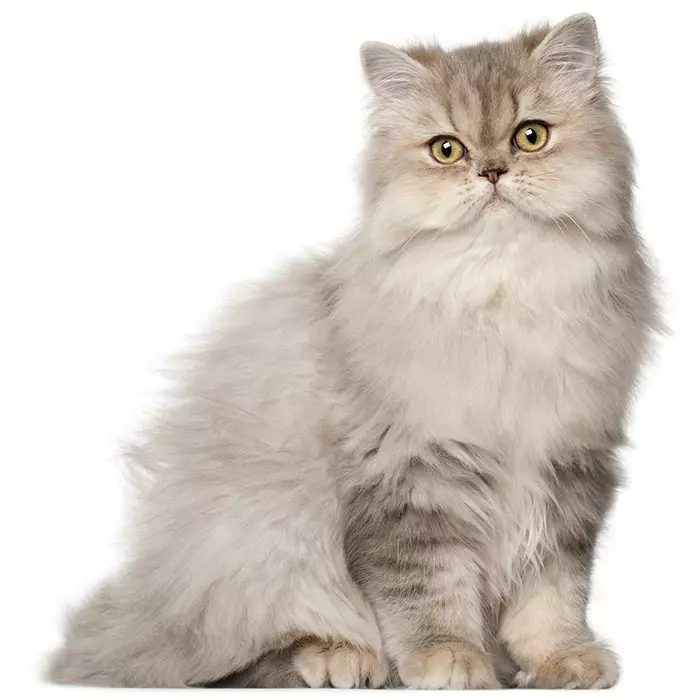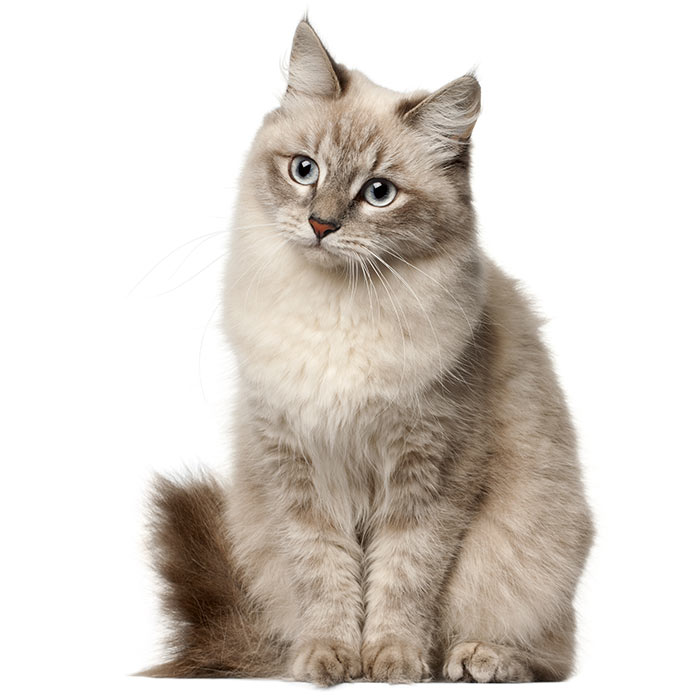Balinese
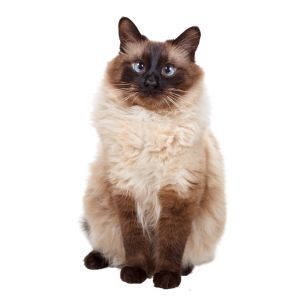

| Recommended for | Individuals and families with kids; anyone wanting an affectionate and interactive companion |
| Breed Classification | Oriental / Longhair |
| Other names | Long-haired Siamese, Bali |
| Lifespan | 15 to 20 years |
| Size | Medium |
| Temperament | Affectionate, social, interactive |
| Intelligence | Highly intelligent and quick learners; enjoy interactive play and tricks and puzzles |
| Tendency to vocalise | Highly vocal; ongoing conversation is the norm, with occasional wails |
| Maintenance Level | Moderate grooming needs, requiring regular brushing and regular play and mental stimulation |
| Health Risk | Generally a healthy and long-lived breed, but it does have a moderate health risk level as they can be predisposed to certain health conditions that date back to their Siamese ancestors. |
Insuring a Balinese?
Get our award-winning Nose-to-Tail Cover with up to $30k annual benefit limit, up to 90% of eligible vet bills back, and no sub-limits.
Get a quick quote
Is this breed right for you?
Try our breed selector quiz to find out your best matching breed!
Insuring a Balinese?
Get our award-winning Nose-to-Tail Cover with up to $30k annual benefit limit, up to 90% of eligible vet bills back, and no sub-limits.
Get a quick quote
Breed history of Balineses
Named for the exotically graceful dancers on the Indonesian island of Bali, the Balinese is a longhaired variety of the Siamese breed that did not originate in Bali but in the United States.
Since the long-haired gene is recessive, longhaired kittens regularly appeared in Siamese to Siamese matings. However, in the 1940s, two Siamese breeders began working to develop the longhaired type as a separate breed. They carefully preserved the Siamese bloodlines and permitted no other breeds into their breeding.
The breed was officially recognised in the 1960s and was accepted for CFA Championship competition in 1970. Initially recognised only in the four traditional Siamese point colours, other “non-traditional” Siamese colours were accepted in 1979 under the name of “Javanese” or “Oriental Shorthairs”. In 2008, CFA breeders voted to merge the two into a single breed with separate divisions.
The modern Balinese cat is smaller and stronger than its predecessors. It retains the outgoing, interactive personality and high intelligence of its Siamese cousins, while being somewhat less talkative and having a softer voice. However, it remains a relatively uncommon breed compared to other purebreeds such as the Siamese, Burmese and Ragdoll.
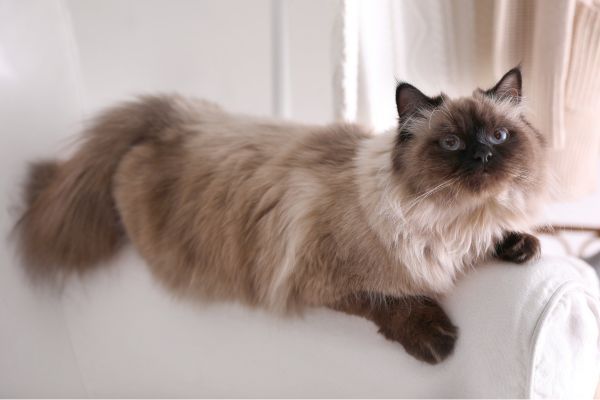
Physical description of Balineses
The Balinese cat is very similar to the Siamese cat but their fur is longer and slightly softer. A medium-sized, graceful cat, the Balinese has a long, slender body and a long, plumed tail. They have striking, almond-shaped, sapphire-blue eyes and their ears are large and pointed. While dainty and elegant in appearance, the Balinese is all muscle, with a lithe, athletic build.
One of the most distinctive features of the Balinese is its luxurious, long coat, which is silky and fine, lying close to the body. The Balinese was originally recognised in four colours – seal, blue, chocolate and lilac, but this was later expanded to include, red, cream, caramel and apricot. Their pointed pattern means these colours appear only on the face (mask), ears, legs and tail, while the body is a contrasting creamy white.
| Weight range | Males: 4.5 to 6 kg; females: 3.5 to 5 kg |
| Height range | 23 to 28 cm (9 to 11 inches) at the shoulder |
| Colours | The four classic colours are seal point, blue point, chocolate point, & lilac point |
| Coat length | Semi-long (mediium) |

Balinese personality and temperament
The Balinese is a playful, affectionate, and highly intelligent breed. They enjoy spending time with their families and form strong bonds, fitting in well with all types of households, including families with children, and can happily adapt to apartment living.
Highly social, they enjoy interactive play, making them ideal companions for active individuals or families. They will eagerly provide assistance with all of your daily activities, follow you around the house, sleep under the covers with you, and, if allowed, eat dinner off your plate.
They are friendly, easy going cats with a bit of a clown hiding inside. Extremely loving, inquisitive and playful, they demand lots of attention and game-playing. They easily learn to play fetch and will retrieve toys until you are tired of throwing them, then figure out how to open the drawer where you hid the toy and start the game all over again. However, just when you think your Balinese is going to go on playing forever, it will curl up in your lap and go to sleep.
Not as highly strung as Siamese and not quite as vocal, Balis are nevertheless very talkative. They like to make their presence known and will vocalise when they want attention or are excited, typically with soft yet frequent meowing and trilling.
They do best as indoor cats as they really love the company of people, demand attention and don’t like to be left alone for long periods of time – and can get into mischief if they are!

Balineses with kids and other pets
Balinese cats have extremely loving temperaments and bond closely with their families and people of all ages. They get along well with children, especially those who understand how to handle pets gently. Older children may be better able to keep up with their high activity level than very young ones.
Balis are highly adaptable and generally get along with other pets, including dogs and other cats, and they appear to be quite fond of dogs! Their loving and affectionate nature makes them a great choice for families with children and cat-friendly dogs.

Balinese training and exercise
Balinese cats have high energy levels and require regular physical and mental stimulation. They love interactive play, climbing, and exploring their environment and thrive in homes where they can engage with their owners in active play and enjoy new challenges to keep them mentally engaged.
Having lots of toys will help to keep them stimulated: laser pointers, feather wands, teaser toys, puzzle feeders are all good options. Balis also enjoy climbing, so providing cat trees or shelves allows them to burn energy while satisfying their natural instincts. They can play fetch as well as any Retriever and will retrieve toys until you are tired of throwing them, then figure out how to open the drawer where you hid the toy and start the game all over again.
Highly intelligent, agile and athletic, Balis excel at the feline sports such as agility and are very receptive to training. They can easily learn to walk on a leash. While they enjoy outdoor exploration, they are content as indoor companions where they can stay safe and engage in interactive play and mental stimulation. If allowed outdoors, they should be supervised to ensure their safety and prevent them from wandering.
| Energy level | High |
| Exercise requirements | Daily play sessions and opportunities for exploration |

Balinese feeding and nutrition
The Balinese thrives on a balanced diet that supports its active and playful nature. High-quality, protein-rich food is ideal for this breed, helping to maintain muscle mass and overall health. A combination of wet and dry food is recommended to ensure hydration and digestive health. Look for food that includes essential fatty acids, vitamins, and minerals to support their coat and general well-being.
Portion control is important to prevent overfeeding, as Balinese cats tend to have a healthy appetite. Their food intake should be divided into two or three meals a day to maintain a healthy weight. Always provide fresh water, and consult your vet for dietary recommendations based on your Balinese’s age, activity level, and health.

Balinese care and grooming
The Balinese has a sleek, single coat that requires some grooming to keep it looking its best, but is relatively low-maintenance for a longhaired breed. Brushing two to three times a week is recommended to prevent matting and remove loose hairs. Occasional baths can help maintain the coat’s shine and smooth texture. Blow drying is not necessary, simply confine the cat in a warm area of your home and allow it to air dry.
Although longhaired, Balis lack a warm undercoat, so they are not naturally equipped for very cold temperatures and may need extra warmth during winter. On the plus side, the lack of undercoat means that they shed less than double-coated breeds. Like most cats, they may shed a bit more than usual during spring and autumn.
Health issues for Balineses
- Progressive Retinal Atrophy (PRA) is a genetic condition that causes degeneration of the retina, leading to progressive vision loss and potential blindness. Symptoms may include night blindness and dilated pupils. While not widespread in Balinese cats, it remains a concern, and early detection through regular vet visits is crucial.
- Hypertrophic Cardiomyopathy (HCM), a heart condition that causes thickening of the heart muscle, is more commonly seen in Balinese cats. It may lead to heart failure if not managed. Early signs can be subtle, so regular vet check-ups and heart screenings are important for detection.
- Dental Disease is another concern, particularly gingivitis, which causes gum inflammation and tooth loss. Regular brushing and routine dental check-ups are necessary to prevent this condition from progressing and maintain oral health.
- Kidney Disease can affect Balinese cats as they age. Symptoms include increased thirst, frequent urination, and weight loss. Regular vet visits for early detection and management are essential, as older Balinese cats may be more susceptible.
Not all conditions are covered by Pet Insurance. For details of Bow Wow Meow Pet Insurance cover, refer to the Product Disclosure Statement.
Free engraved pet ID tag on sign up3
Customer Satisfaction
21 day cooling off
Easy to use Pet Portal

GapOnly® in vet claims
MORE INFORMATION
The Balinese Cat Society UK: http://www.balinesecatsociety.co.uk/
The Cat Fanciers Association Inc: http://www.cfainc.org/


